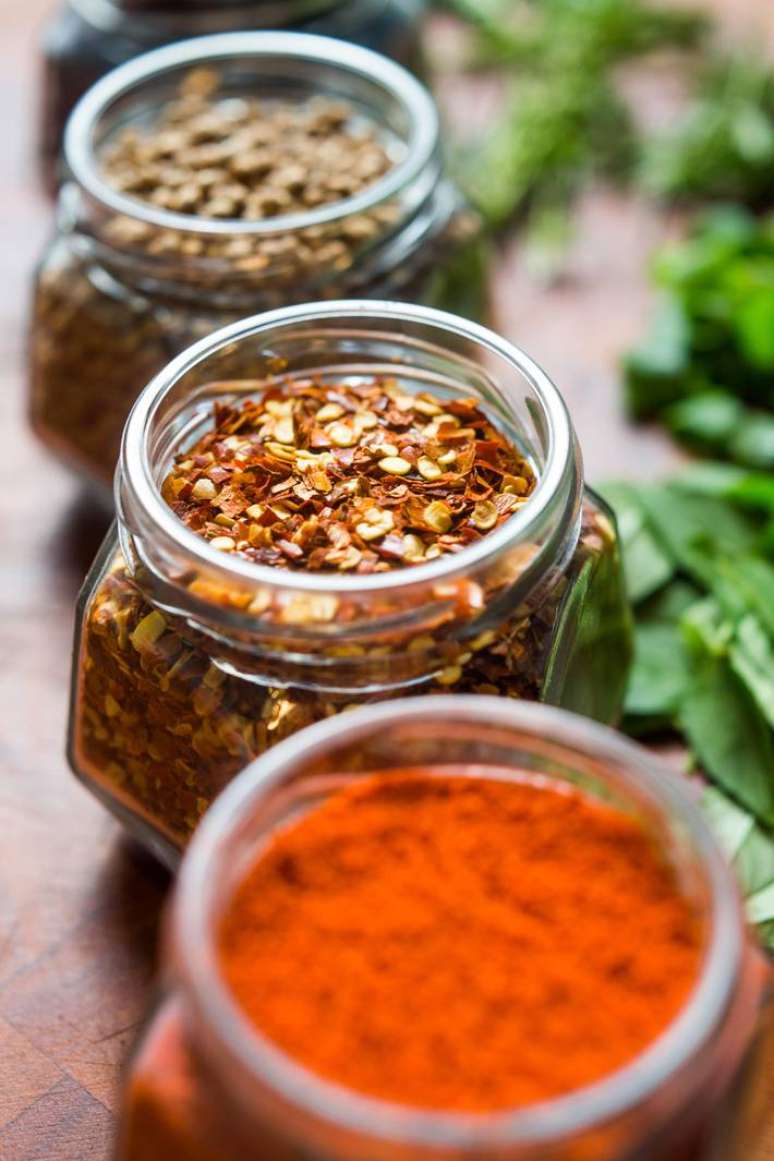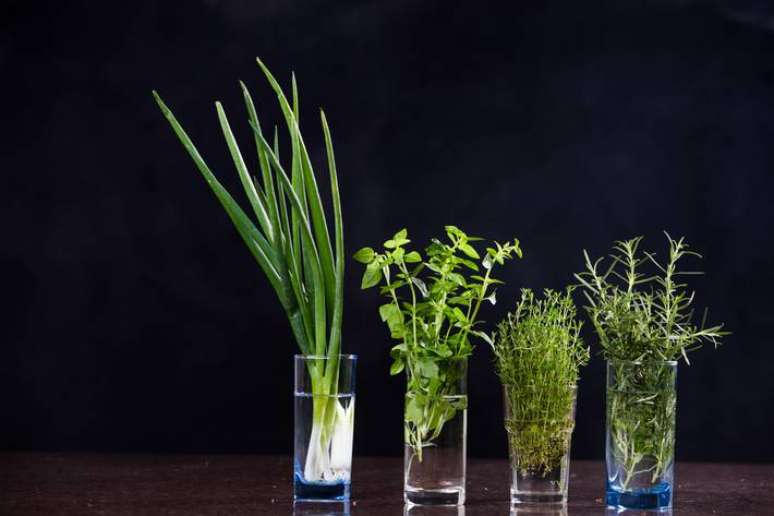It’s not difficult to unravel the world of condiments, but you need to understand some tips
It is not uncommon to open the door of any kitchen cabinet and come across the most used condiment in the kitchen: salt. According to the 2019 National Health Survey (PNS), sodium consumption by Brazilians is 9.34 grams, almost double the amount recommended by the World Health Organization (WHO), which is 5 grams.
There is no doubt, however, that it is a fundamental ingredient for the kitchen, as it serves to enhance the flavor of the food that goes into the pan. However, there are other ways to add more flavor to your food.
Condiments and fresh herbs are nothing new to the Brazilian population, but not everyone knows how to preserve, choose and combine these inputs.
How to choose dry spices
The reality is that the vast world of spices is not impossible to unravel. All you need is patience, time and a little intuition.
“In an effort to improve the taste of food, we don’t know exactly what each of these spices taste like, so we go a bit blind, groping in the dark about spices,” explains chef Clarice Reichstul, of Shoshana Delishop, who recommends buy spices in their original form and not already ground.
The ideal is to have the toppings complement each other and be able to identify all the flavors. Not “weighing your hand” is one of the fundamental points, adding a little at a time is one of the secrets to balancing all the flavours.

In the world of meat, in principle, when it comes to cuts of beef, pork, lamb or fish, nothing prevents the cook from using only salt and pepper, in addition, of course, to the right temperature.
“Even so, we can bet on the mixture of fresh and dry seasonings, as well as well-made sauces that allow you to adjust the dish after it’s ready,” explains chef Daniela França Pinto, specialist in cuts of meat.
When it comes to dry condiments, the ideal is always to avoid dehydrated herbs and ready-made condiments, rich in sodium and with an artificial flavor, which make the taste experience difficult.
It is also possible to make your own “dry rub” at home, for example, as it is used in barbecues to season large pieces of meat. A tip is to use brown sugar, paprika, cumin, black pepper and lemon pepper. Just mix and store.

When it comes to vegetables, the ideal is to know each flavor separately, both the ingredients of the matrix and the seasonings that will be used.
“Another tip is to ‘wake up’ the seasonings with a little fat. It is worth putting them right at the beginning of the preparation to flavor and season them while they are still hot. This way you ensure that everything mixes and seasoned evenly ” , explains chef Patrícia Helu, from Caracolla.
For starters, chefs recommend mixing sweet, sour, salty, and spicy flavors. The ideal is to balance these elements until the desired combination is obtained.
How to store dry spices
“Although dry condiments are considered non-perishable and have a low water content in their composition, durability can be compromised or reduced when they are inappropriately exposed to the elements,” explains Marieli Lima, lecturer in the Graduate Program in Food Engineering Food of the Federal University of Uberlândia. This is because “the conditions of exposure favor oxidation reactions and the action of enzymes on the condiments, which result in loss of colour, aroma and flavour”.
Therefore, the ideal storage is away from light, moisture and other external interference. Very well sterilized or airtight glass jars work as containers and help preserve flavors and aromas.

In general, the conservation strategies are the same, but it should be considered that each type of condiment has a different concentration of components and essential oils. Green and red condiments tend to fade faster when in contact with light and oxygen.
Or it may happen that a condiment absorbs water faster or slower than the others. Therefore, it is important to ensure that the place where the containers will be placed is dry and dark.
How to choose fresh spices
Fresh herbs require more care when choosing them at the supermarket. Attention and care are needed, as yellowish leaves, excessively dry or too humid, to the point of becoming slimy, are to be avoided.
Ideally, the greens of the herbs are very lively and the leaves hydrated and firm, with no cracks or “burns” on the sides from contact with the cold refrigerator.
The logic of combinations follows a line similar to that of using dry condiments: it is necessary to find a balance between the flavors of the herbs and the other ingredients of the recipes.
Delicately flavored meats, such as fish and chicken, require softer-tasting herbs, such as basil and dill. Red meats, on the other hand, can be finished with aromatic herbs with more pungent flavors, such as rosemary, sage and thyme.

Vegetables are often challenging in cooking, but stronger-flavored herbs should be used in smaller quantities. Those with a more delicate flavor in greater quantities. Ideally, neither flavor should completely overlap the other,” Clarice advises.
As for the best use in nature, it is always recommended to finalize the preparations, not for cooking, since the contact of the herbs with heat “can favor a partial loss of their nutrients, especially vitamins A, C, B1, B2 and C”. , as explained by Marieli.
How to store and preserve fresh herbs
Fresh herbs can be stored refrigerated or frozen. The first step is to leave them immersed in water and sanitize them with a spoonful of sodium hypochlorite for each litre.
When you put them in the fridge, the ideal is to keep them in a container with a lid and always cover them with a cloth or paper towel to avoid burns on the leaves due to low temperatures.
In addition, the container prevents other odors from inside the refrigerator from interfering with the flavor of the herbs.
The freeze method is also an option for those who want to keep these inputs longer. From there, the herbs should be defoliated and stored in a freezer-safe ziploc bag.
However, it’s worth remembering that some fresh herbs freeze best on their own. Examples of this are parsley, chives and mint. Others, like basil and rosemary, perform best when frozen in ice cube trays and covered in olive oil. The idea is to take them out of the freezer and ramp up hot recipes when needed.
It is worth mentioning that the use of these condiments can vary whether they are in their natural state or frozen.
+The best content in your email for free. Choose your favorite Terra newsletter. Click here!
Source: Terra
Ben Stock is a lifestyle journalist and author at Gossipify. He writes about topics such as health, wellness, travel, food and home decor. He provides practical advice and inspiration to improve well-being, keeps readers up to date with latest lifestyle news and trends, known for his engaging writing style, in-depth analysis and unique perspectives.







